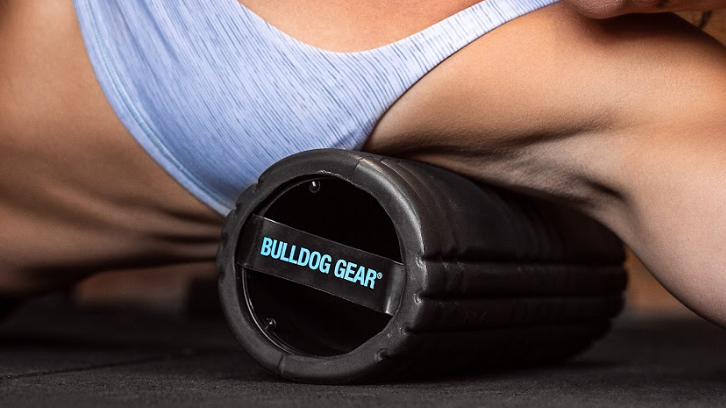|
21/03/2022 | Andrew Tracey Andrew Tracey is a long time collaborator with Bulldog Gear. A coach, writer and current fitness editor of Men’s Health Magazine, he has been in and around the fitness industry for the past 16 years. Having enjoyed and endured a number of disciplines from endurance racing, to strongman, to Crossfit AT enjoys getting neck deep in the practice just as much as the theory. |
Banded pull-ups are often seen as the primo regression when it comes to learning the pull-up, or introducing extra, assisted volume into your workouts.
They work by using band tension to effectively reduce the weight of your body. This action mimics pin loaded machines that do the same, but at a fraction of the cost (like, 0.1% of the cost..).
Unlike machine assisted pull-ups, that provide assistance in a ‘linear’ fashion, bands provide the most assistance at the bottom of each rep where band tension is greatest, gradually easing off towards the top of the rep. This can be advantageous and help you build towards full reps if you struggle with the initial pull, but if you find the ‘weak spot’ in your pull-up game to be getting that chin above the bar, you may find this working against you. That being said, it’s a fantastic regression, nonetheless and we’d be splitting hairs to call this a ‘problem’.
One of the biggest issues trainees come up against when performing band assisted pull-ups, set up in the traditional way, is getting in and out of the band unscathed. Depending on the level of assistance you need and size of the band necessary, this can range from a few misfires getting started, all the way through to something resembling a slapstick comedy. Not a good one, either.
Whether you find setting up for assisted pull-ups to be problematic, are fed up with having to explain welts from slipped bands or just want a slicker way to incorporate pull-ups into faster paced workouts, then this rack hack is for you.
Set a pair of J-Pegs in a rack or rig at around waist height (this will very depending on your weight and strength), loop a band around both pegs creating an elastic ‘platform’ to step onto. Grip your pull-up bar, and lower your body into a full dead-hang with both feet on the band. Flex your arms, drawing your elbows down and back towards your pockets, allowing the band to assist you upwards until your chest reaches the bar. Pause here for a second before slowly lowering back into a dead hang and repeating.
If this level of assistance is a bit too helpful, or you’re just ready to progress, lower the height of the band on the rack decreasing the amount of assistance it provides.
You can also use this method to begin easily incorporating ‘eccentric reps’ into your training, using the band to help you get above the bar before stepping off of the band and controlling yourself back down to the bottom of the rep with no assistance. This is a great way to build strength and become accustomed to moving your own bodyweight through space.
For more movements that will have you mastering the pull-up in no time, check out our article-



